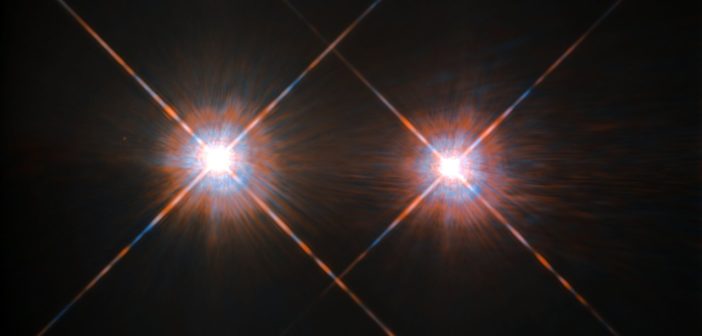Across the Milky Way, pairs of nearly identical stars orbit each other, separated by vast distances. What can recent survey data tell us about how these systems form?
Binary Star Breakthroughs
By studying binary stars, astronomers hope to discern the details of star formation as well as how repeated gravitational encounters can shape stellar systems after they’ve formed. Common though binary stars may be, they’re not without their mysteries, and recent data have revealed intriguing details about the binary stars in our galaxy.

A view of the Milky Way containing 1.7 billion stars observed by the Gaia spacecraft. [ESA/Gaia/DPAC, CC BY-SA 3.0 IGO]
If these distant binary companions formed close together in a single disk before being driven to their current locations by gravitational encounters, these systems should have extremely elongated, or eccentric, orbits — and thanks to the Gaia spacecraft, we can test that prediction for thousands of stars.

Observed distributions of the measured v–r angle for wide twin (blue) and non-twin (orange) binaries. The black lines show the simulated distributions for binary systems with eccentricities, e, of 0 (solid line) and 0.90 (dashed line). [Hwang et al. 2022]
Exploring Eccentricities
Widely separated binary systems take more than a thousand years to complete a single orbit, making it challenging to measure the eccentricity of an individual system. Instead, Hsiang-Chih Hwang (Institute for Advanced Study) used a statistical technique to study nearly a million binary systems at once. Using stellar position and velocity data from Gaia, the team measured the angle between two vectors: one that describes the difference in the binary members’ motion across the sky (v) and one that connects the two stars (r).
By comparing the angle between those vectors to theoretical predictions for stellar populations with different eccentricities, the team determined that twin binaries with orbital separations of 400–1,000 au tend to have extremely eccentric orbits. Specifically, there appear to be a high number of systems with eccentricities between 0.95 and 1.0.
Formation Possibilities

Left: Angle distributions for twin binaries with orbital separations of 400–1,000 au (blue). A power-law model is shown in black and the result for a simulated population of wide twin binaries in which 18.9% of stars have eccentricities between 0.948 and 0.992 is in red. Right: The modeled eccentricity distribution that corresponds to the dashed red line in the left panel. Click to enlarge. [Hwang et al. 2022]
- An instantaneous “kick” could wrench a close circular orbit into a highly eccentric one, but it’s not clear what process could provide the kick.
- Wide, eccentric twin binary systems might instead have three stars, with the third star being a close, unresolved companion of one of the two widely separated stars. However, previous research suggests that unresolved stellar companions are not especially common among twin binaries.
- Interactions between a young binary system and the disk surrounding it could increase the system’s eccentricity. This process would affect all close binaries — not just twin binaries — but the results might be more apparent in the twin binary population because twins are more common among close binary systems.
The formation of wide, eccentric twin binaries has implications for single stars as well; Hwang and coauthors outline the possibility that the same process that drives close binary systems into highly eccentric orbits likely separates some systems entirely, creating pairs of “walkaway” stars that meander in opposite directions through the galaxy.
Citation
“Wide Twin Binaries are Extremely Eccentric: Evidence of Twin Binary Formation in Circumbinary Disks,” Hsiang-Chih Hwang et al 2022 ApJL 933 L32. doi:10.3847/2041-8213/ac7c70
